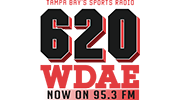The “Luck” Factor
This first month of NFL action has provided a good deal of information – affirming many team evaluations while also causing the perception of others to change. But to what extent can we rely on a four-game sample to project going forward? I wish I could give a quantifiable answer to that question but I’m not that smart, yet. What I can tell you is that the process that determined the outcomes of weeks 1-4 was subject to a good deal of randomness. In other words, “luck” – both good and bad –has made the final score an imperfect measure of a team’s true talent level. Deciphering which teams are experiencing these extreme levels of positive or negative variation can go a long way in gaining an edge over the betting market.
Below are two key statistics that highlight teams that are experiencing the greatest degrees of good and bad fortune in the turnover department – an aspect of football that has a large influence on games but also has strong mean-regressing characteristics.
|
Fumble Recovery Percentage |
||
|
Rank |
Team |
Recovery % |
|
1 |
Tennessee |
88.89% |
|
2 |
Arizona |
72.73% |
|
3 |
Kansas City |
72.73% |
|
30 |
San Francisco |
22.22% |
|
31 |
San Diego |
22.22% |
|
32 |
Pittsburgh |
18.18% |
|
Turnover Margin |
||
|
Rank |
Team |
Margin |
|
1 |
Tennessee |
9 |
|
2 |
Kansas City |
9 |
|
3 |
Seattle |
7 |
|
30 |
NY Giants |
-9 |
|
31 |
NY Jets |
-10 |
|
32 |
Pittsburgh |
-11 |
Dating back to 1989, the team that wins the turnover battle is an impressive 3880-1021-6 (.792) ATS. While the market valuations of these teams may be affected by their recent good or bad turnover luck, we should project these teams to have league-average (turnover margin of 0 and fumble recovery rate of 50%) going forward. For example, it is highly unlikely that the Titans will be able to maintain a pace to finish the year +36 in turnover differential while recovering 9 of every 10 fumbles that hit the ground.
Another statistic subject to mean regression is 3rd-down conversion rates. 3rd-down is a very high-leverage play and therefore has a more profound influence on the outcomes of games compared to performance on 1st or 2nd-down. It is true that better offenses and defenses tend to perform better on 3rd-down (especially when you consider this stat only accounts for down and not distance), but I would argue that 1st and 2nd down performance can just as indicative of future success. But because 3rd-down has a greater influence on the final score, the market systematically overreacts to extreme levels of conversion rates on 3rd down.
|
Offensive 3rd-down Conversion Rate |
||
|
Rank |
Team |
Success rate |
|
1 |
Denver |
55.32% |
|
2 |
San Diego |
50.00% |
|
3 |
Carolina |
48.78% |
|
30 |
Arizona |
29.17% |
|
31 |
St Louis |
25.86% |
|
32 |
NY Giants |
22.92% |
|
Defensive 3rd-down Conversion Rate |
||
|
Rank |
Team |
2013 |
|
1 |
Detroit |
21.28% |
|
2 |
Kansas City |
22.22% |
|
3 |
San Francisco |
30.91% |
|
30 |
Minnesota |
47.27% |
|
31 |
Atlanta |
49.09% |
|
32 |
NY Giants |
50.00% |
Notice the Giants are the worst team in football on 3rd-down, both on offense and defense. In 2012, New York converted on 3rd down 40.62% of time while surrendering first downs just 42.42% of the time. It is highly unlikely that they sustain such a poor level of performance on 3rd down going forward. Combine this with their extreme degree of misfortune in the turnover department and feel that the market is undervaluing the Giants. They have started the year 0-4 ATS but I would expect a .500 ATS record — at the very least — over the final 12 games of the season. Respected opinions moved the Giants spread at Kansas City down to 3 from 4.5 last week. I feel a similar adjustment in price is warranted this week; New York should close as a field goal favorite over Philadelphia.












